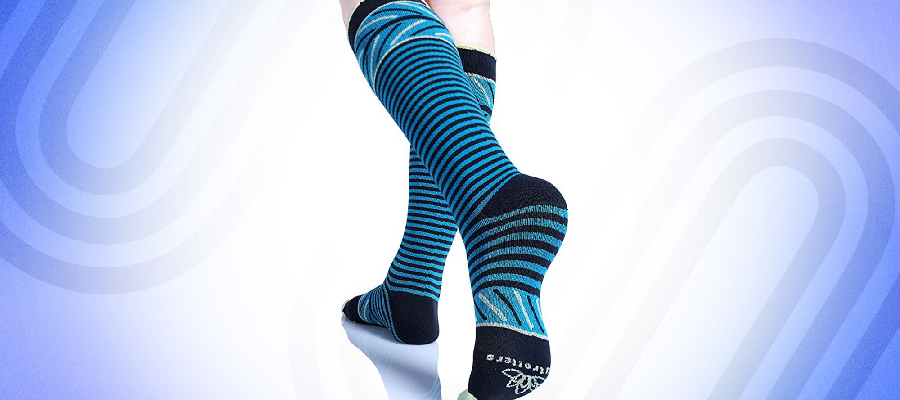Neuropathy is one of the most common side effects of diabetes. It refers to nerve damage that causes pain, numbness, and a tingling sensation in the feet. And due to the loss of sensation, diabetic patients are more prone to injuries.
Patients with existing medical conditions are more prone to these injuries. And diabetic socks are invented to help combat this problem. They are specifically designed for people who have diabetes.
What Are They?
These socks are different from mainstream socks as they use padding to protect at-risk feet. They have a different structure for the stitches and are made out of various yarns and fibers. In addition to protecting the feet from injury, they also help keep the feet dry and improve blood circulation.
Benefits
As they offer ample cushioning, diabetic patients can protect their feet from injuries caused due to rubbing on the shoe or by stepping on an object. People can also use socks to gain protection against pressure and ulceration.
Based on studies, 15 to 20% of diabetic patients are prone to developing foot ulcers in their life. An open wound leads to infection, which could prove to be life-threatening and might lead to amputation. Although, close to 80% of amputations are preventable.
How Is It Different From Compression Socks?
Socks designed for diabetic patients help combat skin irritation and protect the feet. Meanwhile, compression socks are prepared to deal with swelling by increasing the blood flow in the leg and thereby preventing water retention.
Compression is a factor that is inbuilt in some diabetic socks. Moreover, patients who have swollen legs due to their diabetes may benefit from the use of compression socks. Although, it is advisable to consult your doctor to decide the best fit for you.
Factors to Consider When Buying Them
Socks are personalized to every user in general, especially for diabetic patients.
Elasticity
Everybody appreciates a well-fit snug sock. However, it is advisable for people with diabetes to avoid socks that have elastics on the top end. It is because this can disrupt circulation by restricting the blood flow in the feet. So, it is better to choose stretchy socks that have a non-binding top.
Material
Due to the lack of sensation in their feet, diabetic patients are more susceptible to blisters. Hence, opting for socks made with softer fibers such as bamboo and wool proves beneficial. The material does not rub against the skin and hence does not cause friction, the most common cause of blisters.
Moisture Control
The nervous system is responsible for controlling the level of foot moisture. As such, in diabetic patients, due to nerve damage, the ability of the nervous system to control moisture levels is often affected.
Sweaty feet in a damp environment can lead to infections. So, ensure that the socks are made up of moisture-wicking material such as acrylic fibers which will help keep your feet dry throughout the day.
Padding
The presence of extra cushioning provides comfort for all users irrespective of whether they are diabetic patients or not. This is significantly more crucial for those struggling with diabetes as it helps prevent injuries.
No Seams
Seams lead to the creation of pressure points in the feet. As such, socks without seams are preferred for diabetic patients as they minimize the risk of getting blisters that could eventually lead to foot ulcers.
If you are a diabetic patient, you should get into the habit of checking your feet regularly for sores and injuries. In the meantime, using medicated socks helps reduce developing any wound or foot ulcer. It also helps promote overall blood circulation and provides added comfort for your feet. As such, socks are an essential part of foot care for anybody with diabetes.


